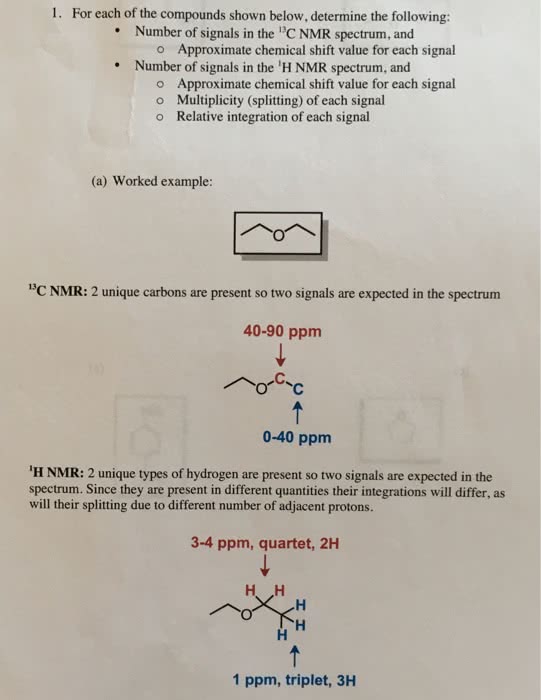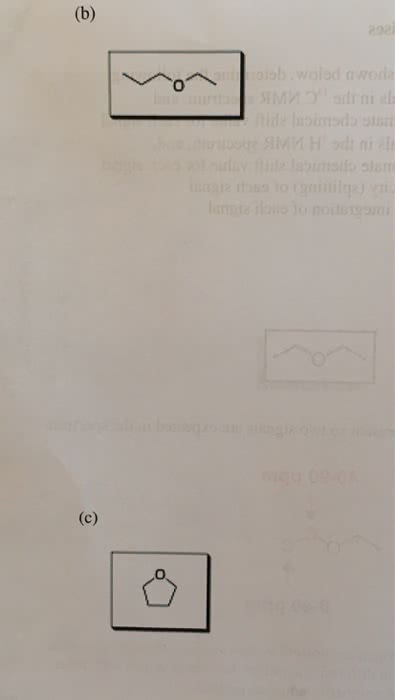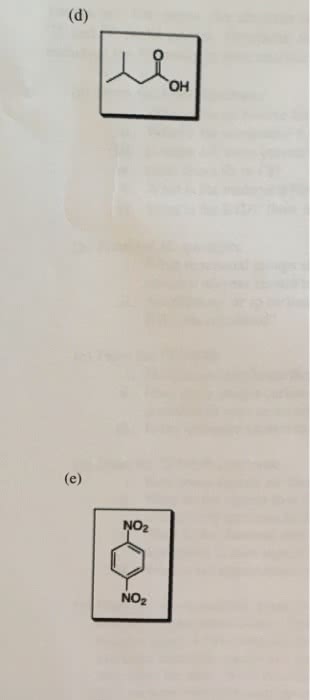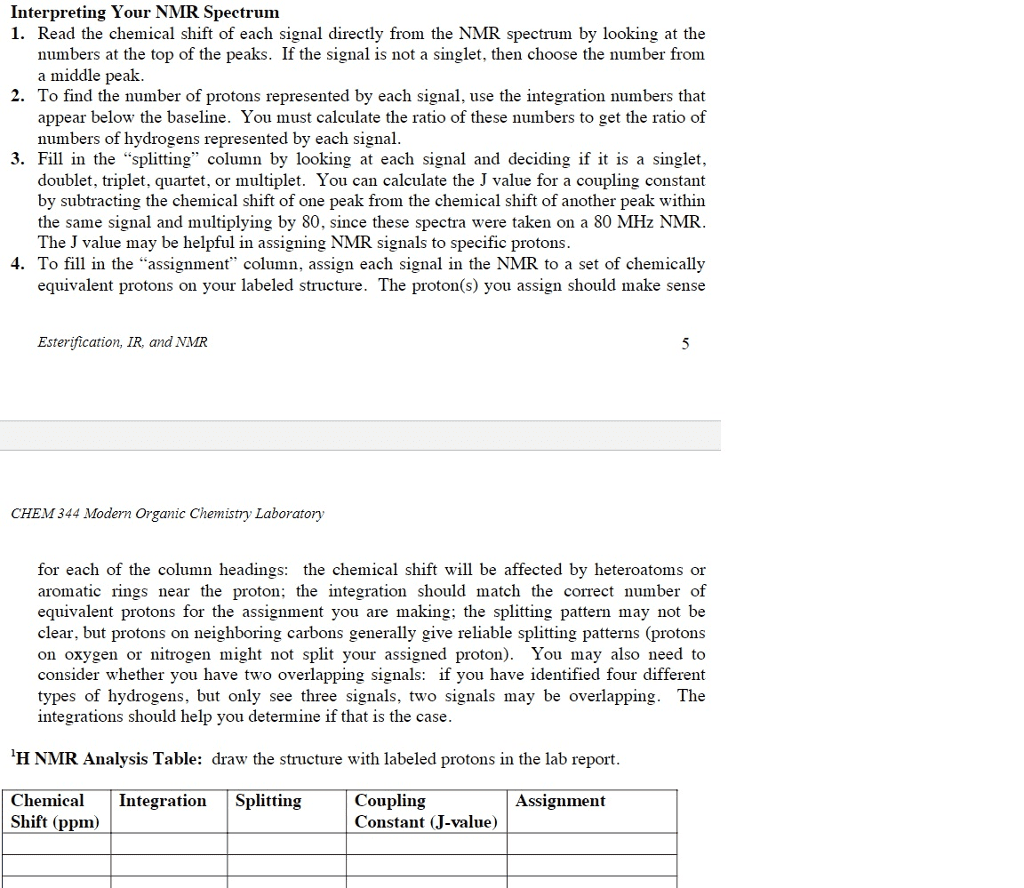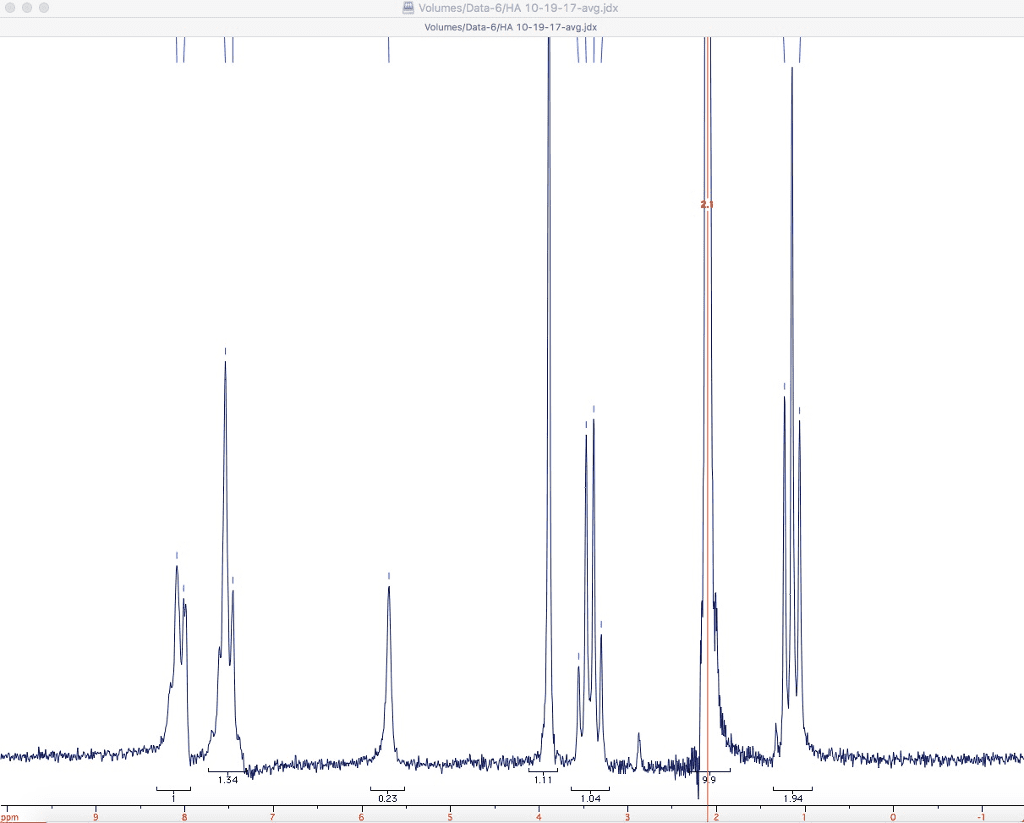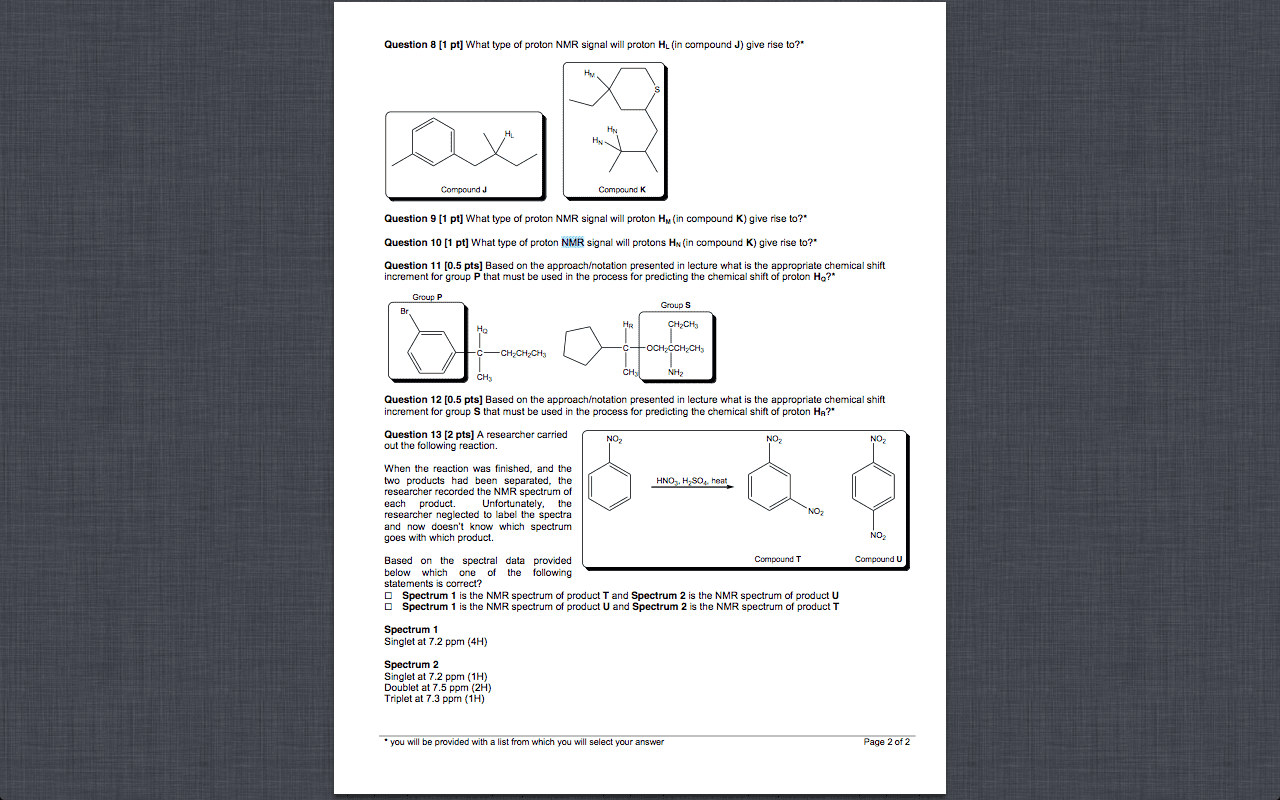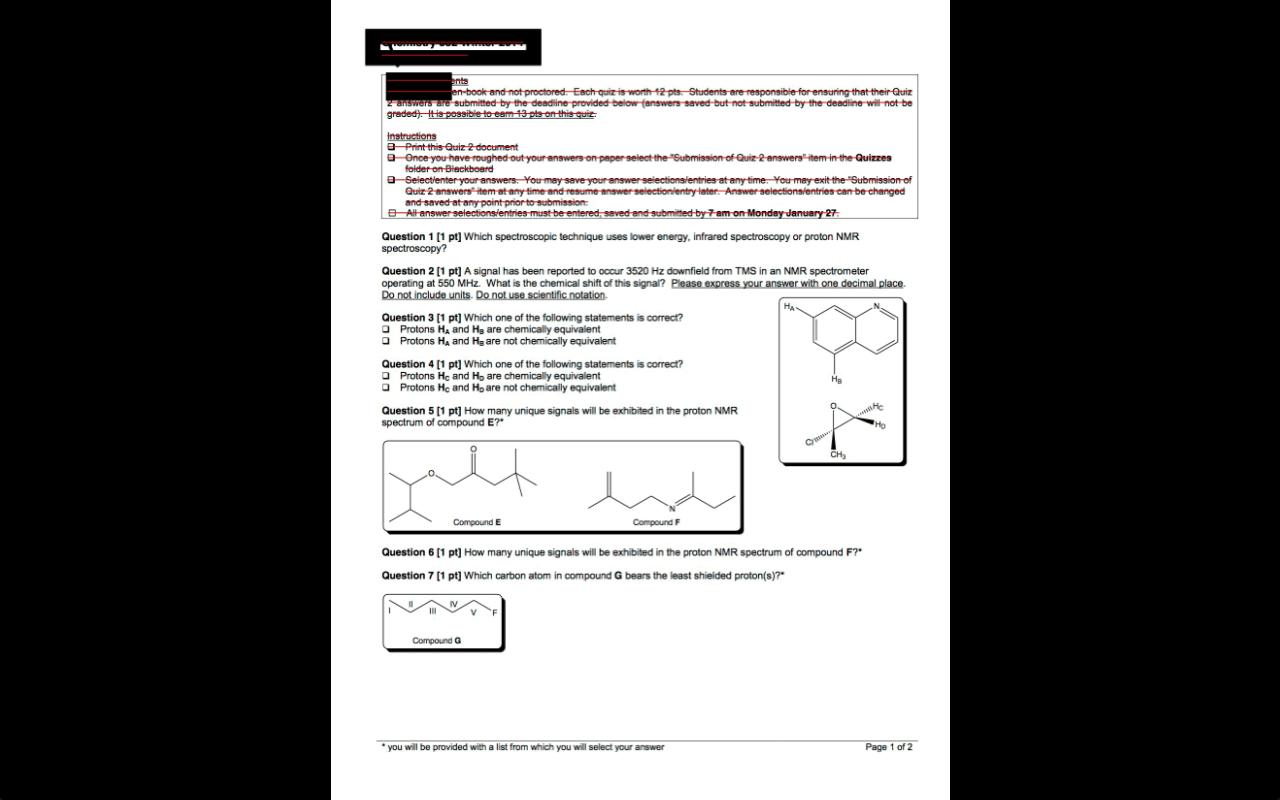CHE 211 Study Guide - Midterm Guide: Methylene Group, Diethyl Ether, Electronegativity

Organic Chemistry 2: NMR Spectroscopy
Interpreting 1H NMR Spectra
o Typically, four types of information can be extracted from a proton NMR spectrum:
1) Positions of the groups of signals along the horizontal axis, which we now know are
called the chemical shifts
2) Number of different kinds of protons in the molecule of the sample, given by the
number of groups of signals (each signal or groups of signals usually corresponds to
a different type of proton in the NMR spectrum)
3) Relative number of protons contributing to each group of signals of the spectrum
called integration
4) Pattern within a group of signals, called the spin-spin coupling this is sometimes
called multiplicity of the signal
o Each of these types of information is important in determining the chemical structure of
the sample and we will discuss each one
Numbers of Signals and Integration
• Protons that are in the same magnetic or chemical environment in a molecule
have the same chemical shift in a NMR spectrum such protons are said to be
magnetically/chemically equivalent
• Protons that are in a different magnetic or chemical environment have different
chemical shifts and are said to be non-equivalent or chemically non-equivalent
• The spectrum of chloroethane (left) shows 2 sets of non-equivalent protons
• The three red protons (1.49) constitute one set and the two blue protons (3.42)
constitute another set
o The two sets of non-equivalent protons will
give rise to two peaks in the NMR spectrum
the peaks can be assigned on the basis of their
chemical shifts
o The methylene protons CH2 are deshielded
because carbon also bears the electronegative
chlorine atom and appears downfield at
approximately 3.42 ppm; the methyl protons CH3 are shielded and appear upfield
around 1.49 ppm
o Notice that in the spectrum of chloroethane that the peak for the methyl group is higher
than the methylene group this is a crude way of assigning peaks by looking at the
height of the peak; the more protons in a group the higher the peaks should be
o A better way to compare peaks is to determine the area underneath the peak this is
accomplished by a process known as integration (process of determining the areas
under the peaks which are proportional to the relative number of proton types)
find more resources at oneclass.com
find more resources at oneclass.com

